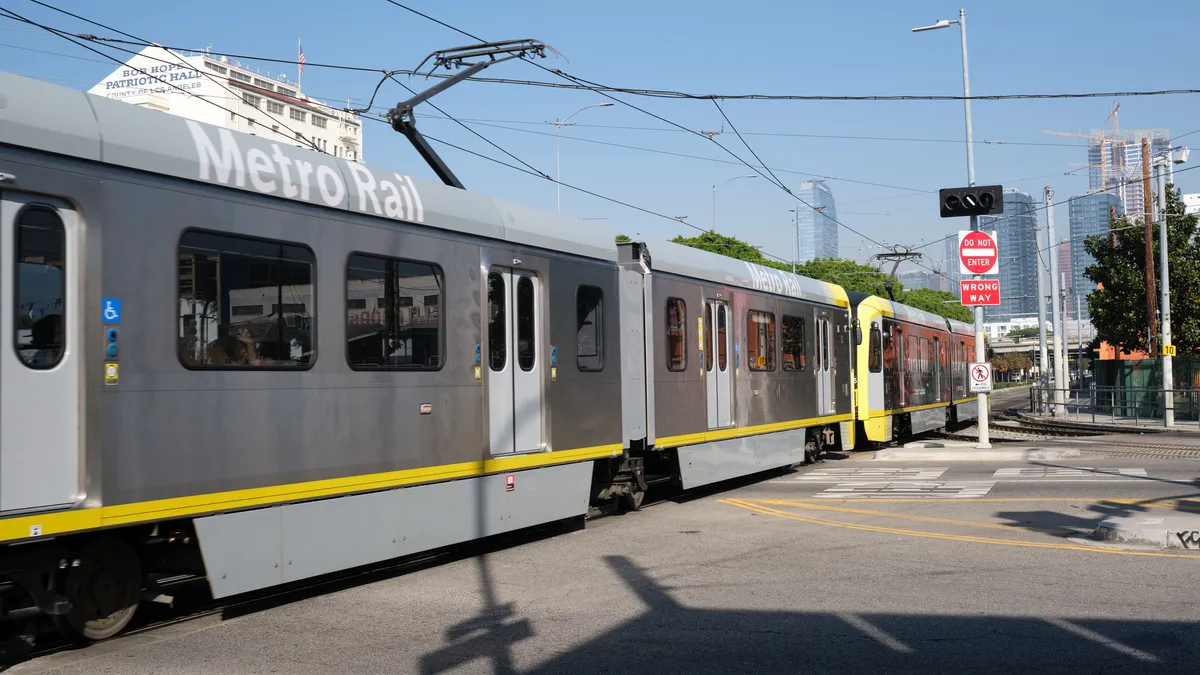Beginning in March 2020, as COVID-19 spread across the U.S. and lockdowns shuttered schools and businesses, ridership on the nation's public transportation systems shriveled up. By April, trains and buses in major cities were running with 50% to 90% fewer passengers than just a couple of months earlier. The impact on transportation departments and transit agencies was swift: fare revenue all but disappeared, frontline workers fell ill and executives suddenly found themselves working a crisis situation from their homes.
Three transportation leaders, speaking on a webinar last week hosted by the Transportation Research Board, reflected on those initial days, discussing the changes they had to make to their agencies' strategic plans and the lessons learned.
Economic and equity issues became paramount for the city of Los Angeles, said Sydia Reese, team lead for employee engagement and performance at the city's Department of Transportation. "We touch everything on the streets," she explained, which enabled them to close certain streets so that restaurants could set up outside.
The department also solicited a racial equity team, Reese said, to help refine their strategic plan and ensure it focused on equity.
The California Department of Transportation (Caltrans) had begun drafting a new strategic plan at the end of 2019. "And then the world changed as we knew it," said Julie Kolaszewski, office chief for strategic management. She explained that they changed some of their goals for the plan, and as they went through the process, three concerns kept popping up.
Those themes, she said, were a focus on community partnerships and engagement; aligning investments to the outcomes of the strategic plan; and "finally committing to equity." Incorporating these elements and other changes delayed the completion of the plan by a year, but Kolaszewski said implementation began while the plan was still being finalized. "We already knew the direction," she said.
In the Philadelphia region, where the Southeastern Pennsylvania Transportation Authority (SEPTA) serves five million people with bus, rail, subways and trolleys, Ryan Judge is director of strategic planning & analysis.
"We were a very commute-oriented transit company, bringing a lot of people into center city in the mornings and then taking them home in the evenings," Judge said. "We know that sort of travel pattern just isn't coming back."
But SEPTA is more than a transit provider, according to Judge. "We are a huge economic and equity engine for a region that is at the backbone and very core of everything that is Philadelphia," he said on the webinar.
He noted how frontline workers see the importance of SEPTA in the community. "If you ask the bus operator what it is that they do, they don't tell you that they drive a bus," Judge said. "They often tell you a story about how they connect somebody to a job opportunity, take children to school or take a grandmother to see her grandkids."
Adapting to the changes brought about by the pandemic isn't easy for any large transit agency, according to Judge, describing agencies as "bureaucratic organizations that are risk-averse."
Caltrans' Kolaszewski agreed that large departments like hers are not good at quickly changing course. But she said among the lessons they learned during the planning process is that agility is required: "If we learned anything throughout the pandemic, it is that our environment can change rapidly and drastically, and so it's really critical to take a look at your strategic plan on a regular basis."












